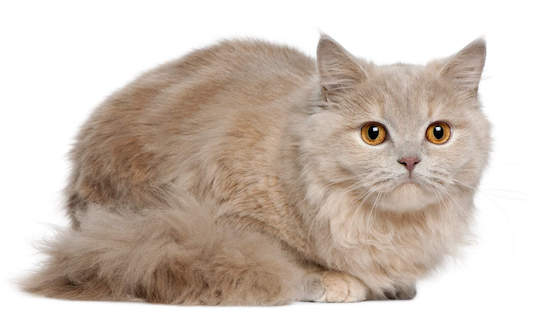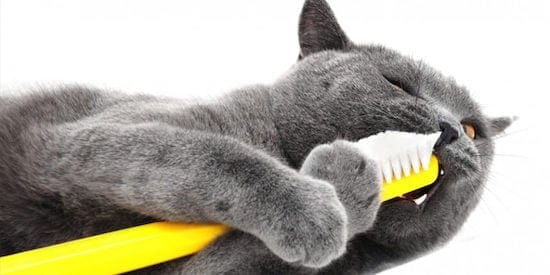“The cat has been described as the most perfect animal, the acme of muscular perfection and the supreme example in the Animal Kingdom of the coordination of mind and muscle.” – R. Ambrose-Brown.
Adored for their mysterious ways and calming purrs, the world has been in love with cats ever since the ancient times. These incredible little animals are more than just pets - they are our friends, our families and our life companions. They bring us together and treat us with tremendous amounts of happiness and love every single day. In return, as their mere hooman servants, we are doing everything we can to help keep our felines happy, healthy and strong.
Great indicators of your cat's health are general conditions of its skin, coat, teeth and gums. The skin should be clear and supple, the coat smooth and shiny and the teeth and gums clean, strong and odorless. Therefore, maintaining disciplined and quality skin, coat and oral care is a crucial aspect of a cat's overall health.
Stop Googling - Ask a Real Vet
Feline Skin and Coat Care
It is a known fact that cats take good care of their own coat. However, according to Royal Canin®, skin and coat concerns are actually one of the top 10 reasons cat owners pay visits to the vet offices for. Healthy skin should be clear of rashes, discolorations or other abnormalities and it should be supple rather than dry, flaky or greasy. The coat should be smooth, shiny, clean and untangled. It should not be brittle, dull nor dry.
The skin is the cat’s largest organ and serves three highly important functions: protection, regulation and sensation. The coat, which comes in a broad variety of lengths and textures, protects the skin and helps regulate the cat’s body temperature. This is why it is highly important to notice any skin and coat abnormalities and attend to the treatments timely and adequately. Additionally, the reported changes can sometimes indicate other, seemingly unrelated problems too. The general condition of your cat’s skin and coat is directly affected by multiple factors including nutrition, cat’s health and age status and grooming habits. (Yuill, 2010 & Royal Canin, 2018).
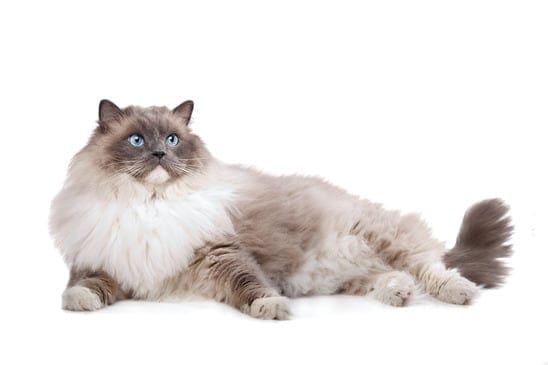
Nutrition in relation to skin and coat care
Poor skin and coat condition can definitely be a reflection of inadequate balance of nutrients. The optimal feline diet should be tailored according to the cat’s age, health status, activity and other personal requirements. The food your cat eats should be rich in digestible proteins, fats, carbohydrates, minerals and vitamins. More importantly, the balance of these nutrients in the diet needs to be appropriate and the quantity of daily food intake needs to be regulated too. Make sure that the nutrients present in the cat food are actually digestible by your cat, as poorly digestible nutrients are unavailable to your cat and only additionally exhaust the liver and kidney (Yuill, 2010).
Cat’s health and age status in relation to skin and coat care
Poor skin and coat condition may also indicate other health issues. Stress and different illnesses may affect the coat appearance and shedding, or cause different skin abnormalities. Hormonal imbalances, parasites, digestive issues, cancer and other conditions all directly affect both skin and coat. Allergic reactions often increase shedding and cause skin rashes. Different bacterial and fungi infections, as well as skin disorders may also cause skin and coat abnormalities. Typically, these abnormalities are usually successfully treated by the elimination of the causing factor (Yuill, 2010).
Therefore, a consultation with a veterinarian is highly recommended. It can be a regular vet visit or even a chat via Online Vet to make sure your fur-friend has no severe health issues, or in a worst-case scenario, to treat them in a timely fashion.
Grooming in relation to skin and coat care
While cats take quite good care of their own coat, they still definitely benefit from a little bit of human help. Investing in a good comb and creating a grooming your feline at least weekly will go a long way. Grooming helps remove the access dead hair, dirt and dust from the coat and it also stimulates new hair growth and tones the muscles. These are the keys to a shiny, strong and healthy coat. Additionally, when you groom your cat, you have the perfect opportunity to keep an eye for fleas, ticks and other parasites, as well as signs of allergies, lumps, swellings and skin disorders.
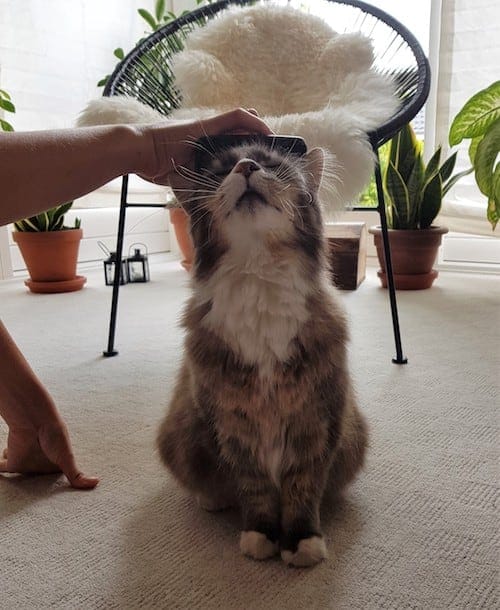
To get your cat used to the routine faster, make the grooming experience enjoyable for the both of you. Groom your cat only when you are both relaxed and keep the first grooming sessions as short as 5 to 10 minutes long. Be patient and give your cat some time to get used to being handled before you can start with longer sessions.
A cat may sometimes also need some shampooing and trimming. It is not a secret that most cats hate water, but occasional bathing is a decent idea. It can be difficult successfully bathing a cat, but luckily, they don’t require regular baths, especially if groomed regularly. If your cat really does need a bath though and you are struggling with it, try following these tips (Poole, 2014):
- Be well prepared. Prepare all the towels, a shampoo and a cup beforehand. Make sure to comb your cat to untangle the fur and maybe engage in a play session with the animal, so it is less stress and energetic once you get them into the bathtub. Feel the tub with lukewarm water and place a towel on the bottom (this gives the cat something to grip on)
- Put your cat into the water and hold it gently whilst talking to them in a calming voice. Wet the cat with the help of the cup. Shampoo the fur and rinse with the cup again. You can use a damp towel to clean their face, as the shampoo may irritate their eye.
- Don’t forget to praise and treat your cat afterward so they would associate the experience with something positive.
Feline Oral Care
Cats have two sets of teeth in their lives. There are 26 deciduous teeth, also known as the kitten teeth, and 30 permanent teeth or adult teeth. According to the data provided by Purina, dental problems occur in about 85% of cats 3 years and older. Dental tartar, one of the most common dental issues observed in cats, forms on the outside of the feline teeth as this is where the food particles and bacteria are accumulated. Brushing your cat’s teeth regularly is the simplest and safest way to avoid this issue. The reason why it is important to avoid the formation of dental tartar (and treat it if it already formed) is because it may lead to periodontal disease or/and loss of a tooth.
Periodontal disease is caused by the bacteria present in the dental plaque, and in the first stage of the condition causes the inflammation of the gums (gingivitis). If the condition remains untreated, gingivitis may lead to the loss of a tooth which is a sign of periodontitis (the advanced stage of the disease). When the disease advances so far, it may lead to bacteria reaching the bloodstream and damaging kidneys and other organs. The most obvious signs of dental issues are bad breath, red and sensitive gums, dental plaque (it is usually yellowish to brown) and excessive drooling (CDC, 2015 & Purina, 2018).
Please note that you should never use toothpaste designed for humans for your cat. Our toothpaste contains xylitol, a sweetener found to be extremely toxic to both cats and dogs (Jerzsele Á et al, 2018). When digested in the cats and dogs, xylitol significantly elevates the levels of insulin in the bloodstream. The level of insulin will be about 6 times higher than for an equal amount of actual sugar. Insulin promotes transport of sugar from the blood to the cells, and such high levels may lead to hypoglycemia - very low sugar levels in the blood. Hypoglycemia further leads to weakness, vomiting, seizures and in severe cases coma!
Because xylitol can have serious effects in cats, immediate medical care may be needed by your feline companion if they have ingested it. Meanwhile, if you don’t have a financial plan for pet emergencies, the costs can get overwhelming. Given this, in what ways can you prepare for such pet emergencies as a pet owner?
Consider Petcube’s Pet Emergency Fund, an affordable pet insurance alternative that offers financial security and peace of mind during unexpected pet emergencies. The emergency fund offers the following:
- $3000 a year for pet emergencies for upto 6 pets;
- No qualifications or credit checks;
- Pets are accepted regardless of age, breed, or pre-existing conditions;
- It can be utilized at any veterinary clinic;
- Direct payment to vet clinic (no need for you to cash out);
- 24/7 online vet for first aid & emergency triage.
If you are ready to invest, we are giving our blog readers an exclusive 27% off on subscriptions if you follow this link.
Instead, use the toothpaste designed specifically for cats. You may even be able to find toothpastes with special tastes (e.g. chicken) which may make your cat more willing to cooperate with you. When you attempt to brush your cat’s teeth, make sure to be persistent but gentle and always use a toothbrush with soft bristles. If you can’t seem to successfully train your cat for this, then you may want to consider using oral hygiene gels or dental chews that contain enzymes which inhibit the bacteria forming dental tartar. The gels can be applied directly or with food.
By providing your cat with well-balanced diet, loads of activity and appropriate coat and dental hygiene, you are helping improve the quality and length of your cat’s life. While it is challenging to form and stick to the coat grooming and teeth brushing routines, with the right amount of time and determination, it is very much possible to train your cat to cooperate and make the job easier for both yourself and your cat. While attending to these tasks, you will also have a better insight in your feline’s general health condition which may help diagnose underlying conditions early in advance.
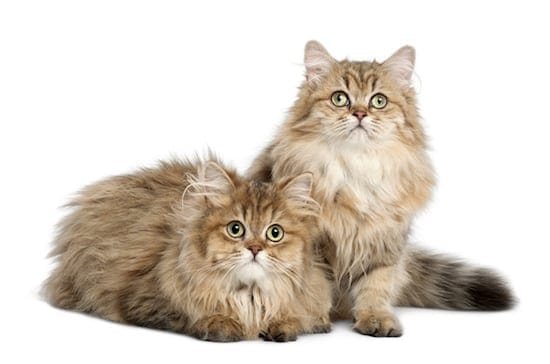
About the author:
Leila Hadziabdic is a Master’s student in Molecular Microbiology, Microbial Ecology and Immunobiology. Always led by her genuine and deep love for all animals, Leila has been surrounded by pets her whole life. She joined the pet genomics company Basepaws in 2017 after earning her Bachelor’s degree in Genetics. Her job is to research and write feline genetic and health-related content, including this Pet Cube discussion about feline coat and dental care and hygiene.
Citations:
- CDC. (2015). Periodontal disease. Retrieved August 2018, from CDC
- Jerzsele Á, Karancsi Z, Pászti-Gere E, Sterczer Á, Bersényi A, Fodor K, Szabó D, Vajdovich P. (2018). Effects of p.o. administered xylitol in cats. J Vet Pharmacol Ther. 41(3), 409-414. doi:10.1111
- Poole, Chris. (2014). How to Bathe a Cat. Retrieved August 2018, from YouTube
- Purina PetCare Advice Team. (2018). Cat Dental Care. Retrieved August 2018, from PURINA
- Royal Canin. (2018). Royal Canin Feline Care Nutrition. Retrieved August 2018, from Royal Canin®
- Yuill, Cheryl. (2010). Coat and Skin Appearance in the Healthy Cat. Retrieved August 2018, from VCA
Was this article helpful?
Help us make our articles even better

